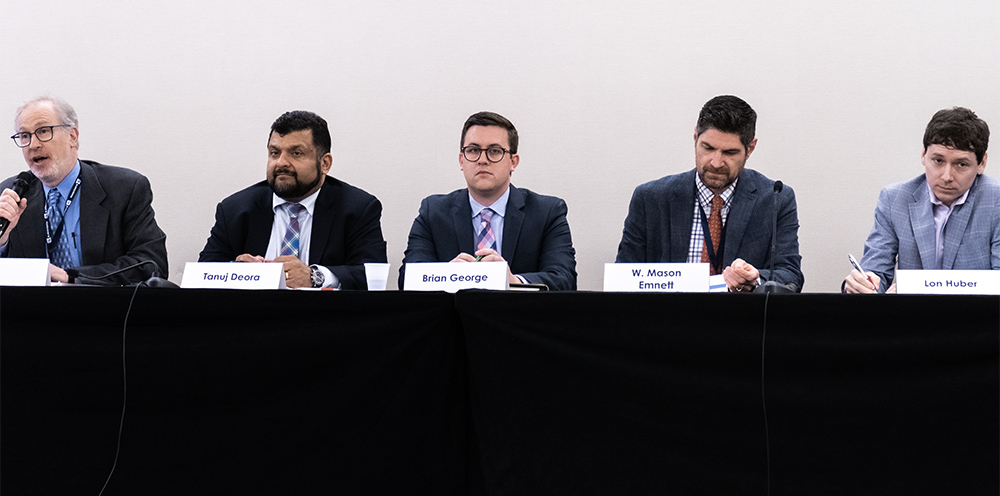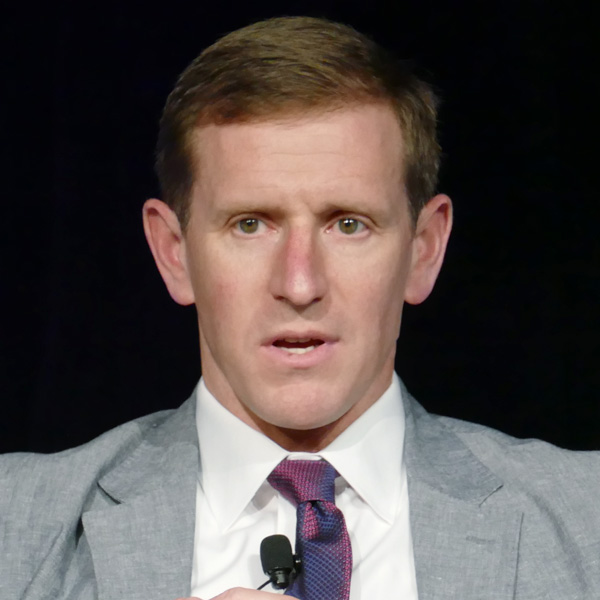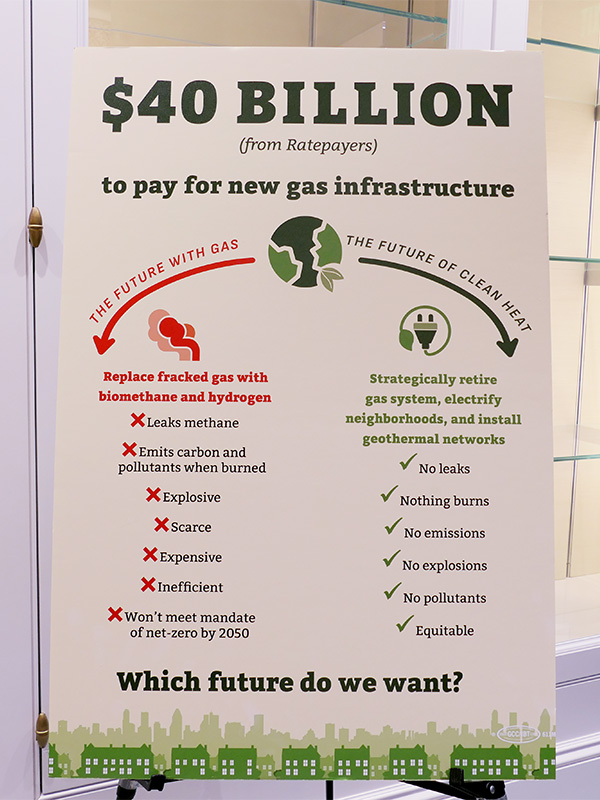New Jersey’s largest planned offshore wind farm would have a “major” effect on commercial fisheries and “scenic and visual resources,” but only a moderate impact in 13 other categories, the Bureau of Ocean Energy Management said Monday in its an environmental impact statement (EIS) for the Atlantic Shores project.
The 900-page draft report on the 1,510-MW project concluded that the wind farm would have “moderate to major” impact on navigation and vessel traffic and a “major” impact on visual aspects of the sea and on cultural resources, such as historic, archeological and geographically significant areas.
The project would also have “negligible to moderate” impact on most mammals, including the endangered North American right whale, the report found. But the cumulative impact of nearby OSW projects and non-wind projects, and Atlantic Shores itself, including decommissioning of the turbines, would be “negligible to major,” the EIS reported. It said adverse impacts would “result mainly from pile-driving noise, vessel noise and presence of structures.”
The impact of OSW projects on whales has emerged as a significant issue in recent months, after several dead whales washed up on the Jersey Shore. Project opponents and two area congressmen have questioned whether the deaths were linked to preliminary marine study work underway for the projects and called for a halt to the projects while the issue is investigated.
Federal and state authorities say there is no evidence that the deaths had anything to do with OSW projects. But poll results released Thursday by Fairleigh Dickinson University suggest the unfounded reports are having an impact on public opinion.
The poll found that when the whale deaths were mentioned in the question, 35% of New Jersey residents said they favored continued offshore wind development, while 39% said development should be halted. When the whales were not mentioned in the question, 42% of those polled were in favor and 33% opposed.
The BOEM report says the impact to the whales of not approving the projects would be “negligible to major,” the same as if the projects go ahead because of issues such as “coastal and offshore development, marine transportation, fisheries use and climate change,” with a warmer ocean and strong storms affecting the sea mammals.
BOEM has scheduled two public hearing to solicit public comments on the draft on June 26 at 1 p.m. and June 28 at 5 p.m., with a 45-day comment period that ends on July 3.
Assessing Impacts
The New Jersey Board of Public Utilities picked the Atlantic Shores project in the state’s second OSW solicitation in 2021, when it also backed the 1,148-MW Ocean Wind II project being developed by Denmark-based Ørsted. The BPU picked Ørsted’s Ocean Wind I project in the state’s first solicitation in 2019. (See NJ Awards Two Offshore Wind Projects.)
The Atlantic Shores EIS covers the project’s first phase, which has been approved by the BPU, and a second phase for an additional 1,327 MW, which has not. Together, the two projects would involve installation of 200 wind turbines.
Monday’s EIS follows by a year BOEM’s release of the draft EIS for Ocean Wind I, which largely made similar assessments. (See BOEM Draft EIS Finds Potential Major Impacts from 1st NJ OSW Project.)
The BPU in March opened the state’s third OSW project solicitation, seeking projects totaling 1.2 GW to 4 GW. (See NJ Opens Third OSW Solicitation Seeking 4 GW+.)
The draft EIS for Atlantic Shores, a joint venture between EDF Renewables North America and Shell New Energies US, assesses the potential biological, socioeconomic, physical, cultural and other impacts of the project, which at its closest is 8.7 miles from the Jersey shoreline.
The study assesses impacts of six different scenarios if the project is approved. These included approval of the entire proposal, along with several scenarios in which the project is modified, including a reduction in the number of turbines and offshore substations to minimize the impact on certain habitats; a reduction of the number of turbines to reduce the visual impact; modification of the project to create a “setback” between the project and neighboring Ocean Wind I; and an adjustment in the type of monopoles used in the foundation to reduce the impact.
The draft EIS then assesses the impact of each scenario and defines them as negligible, minor, moderate or major.
The EIS, for example, concluded in all the scenarios that the impact was either moderate or lower for air; water; birds, coastal habitats and fauna; fish, invertebrates and essential fish habitat; sea turtles; wetlands; demographics, employment, economics; environmental justice; land use and coastal infrastructure; and recreation and tourism.
Increased Vessel Traffic
The study found that the commercial and recreational fishing sectors would be impacted by increased anchoring of boats working on the turbines, marine disturbance caused by cable emplacement and maintenance, and the additional noise generated by construction. Those factors could disrupt fishing trips and make it difficult to fish, as well as prompting some commercial companies to avoid fishing in certain areas — all of which could reduce revenue, the report said.
The effect might also be to push all commercial fishing operations into the same, smaller fishing area, resulting in smaller catches, the report concluded.
“BOEM expects that increased vessel traffic associated with the proposed action would cause long-term, localized, moderate impacts on commercial and for-hire recreational fisheries,” the report concluded. BOEM also found that the overall impact on commercial fishing operations could be “major” in many scenarios.
The study found that the area’s cultural resources would be affected whether BOEM approved the wind projects or not and labeled the impact in the long term “major” in all scenarios, but only “moderate” if the projects were not approved.
“The primary sources of onshore impacts from ongoing activities include ground-disturbing activities and the introduction of intrusive visual elements, while the primary source of offshore impacts includes activities that disturb the seafloor,” the report found. “While long-term and permanent impacts may occur as a result of offshore wind development, impacts would be reduced” through a consultation process to reduce the effects on historic properties, the study concluded.
Navigation and Visual Impacts
The study found that navigation and vessel traffic would experience moderate impact regardless of whether the projects went ahead, in part because of rising traffic in the area and also traffic generated by other offshore wind projects. New Jersey’s OSW projects, if approved, would have a moderate to major impact when added to the cumulative impact of vessel traffic from nearby OSW projects and general water transportation traffic.
“Impacts from the proposed action alone would include increased vessel traffic in and near the project area and on the approach to ports used” by the OSW vessels, the report found. Vessels in the area would also experience “obstructions to navigation” caused by the projects.
During construction, the project would cause “short-term increase in project-related construction vessel traffic, short-term presence of partially installed structures, and short-term safety zone implementation,” the study found.
“Impacts on navigation and vessel traffic would also include changes to navigational patterns and to the effectiveness of marine radar and other navigation tools,” the report said. “This could result in delays within or approaching ports, increased navigational complexity, detours to offshore travel or port approaches.”
The study found that scenic and visual resources would suffer a “major” impact in the longer term, whether the New Jersey wind farms were built or not, because of other wind farms nearby being built and as a result of other marine activities, such as dredging and port improvements, marine minerals extraction and marine transportation, the report found.
If the state’s OSW projects don’t go ahead, “the character of the coastal landscape would change in the short term and long term through natural processes and planned activities that would continue to shape onshore features, character, and viewer experience,” BOEM said.
“Ongoing activities in the geographic analysis area that contribute to visual impacts include construction activities and vessel traffic, which lead to increased nighttime lighting, visible congestion, and the introduction of new structures,” the report concluded. The cumulative impact of other OSW projects and general marine activities would create a “major” impact, the study said. As a result, the cumulative effects of the projects and others in the area would be “appreciable,” the study concluded.
“The main drivers for this impact rating are the major visual impacts associated with the presence of structures, lighting and vessel traffic,” the study found.









